
French Sudan was a French colonial territory in the Federation of French West Africa from around 1880 until 1959, when it joined the Mali Federation, and then in 1960, when it became the independent state of Mali. The colony was formally called French Sudan from 1890 until 1899 and then again from 1921 until 1958, and had a variety of different names over the course of its existence. The colony was initially established largely as a military project led by French troops, but in the mid-1890s it came under civilian administration.
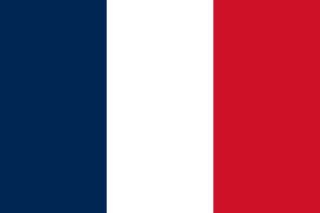
Upper Senegal and Niger was a colony in French West Africa, created on 21 October 1904 from colonial Senegambia and Niger by the decree "For the Reorganisation of the general government of French West Africa".
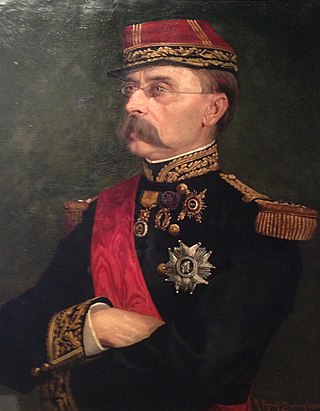
Louis Léon César Faidherbe was a French general and colonial administrator. He created the Senegalese Tirailleurs when he was governor of Senegal.

Fouta Djallon is a highland region in the center of Guinea, roughly corresponding with Middle Guinea, in West Africa.

Kati is an urban commune and the largest town in Mali's Koulikoro Region. The town is situated 15 km northwest of Bamako, Mali's capital, on the Dakar-Niger Railway. In the 2009 census, the commune had a population of 114,983.

Koulikoro is a town and urban commune in Mali. The capital of the Koulikoro Region, Koulikoro is located on banks of the Niger River, 59 kilometres (37 mi) downstream from Mali's capital Bamako.

The Dakar–Niger Railway connects Dakar, Senegal to Koulikoro, Mali. The name refers to the Niger River, not the Republic of Niger. It serves many cities in Senegal, including Thiès, and in Mali, including Kayes, Kita, Kati, Bamako. The line covers a course of 1,287 km of which 641 km lies in Mali.

Kouroussa or Kurussa is a town located in northeastern Guinea, and is the capital of Kouroussa Prefecture. As of 2014 it had a population of 39,611 people. A trade center and river port from at least the time of the Mali Empire, Kouroussa has long relied upon its position near the upstream limit of navigation of the Niger River to make it an important crossroads for people and goods moving between the Guinea coast and the states of the western Soudan and Niger River valley. The town and surrounding area is a center of Malinke culture, and is known for its Djembe drumming tradition.

Rivières du Sud was a French colonial division in West Africa, roughly corresponding to modern coastal sections of Guinea. While the designation was used from the 18th to 20th century, the administrative division only existed from 1882-1891.
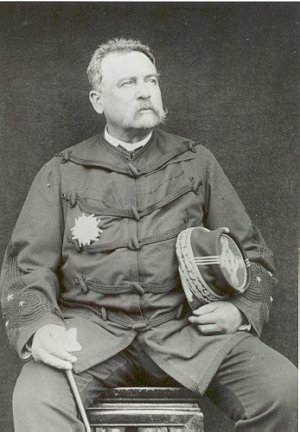
Louis Alexandre Esprit Gaston Brière de l'Isle was a French Army general who achieved distinction firstly as Governor of Senegal (1876–81), and then as general-in-chief of the Tonkin Expeditionary Corps during the Sino-French War.
Ahmadou, was one of the last Almamis of the Fula Imamate of Futa Jallon, in the Futa Jallon region of today's Guinea.
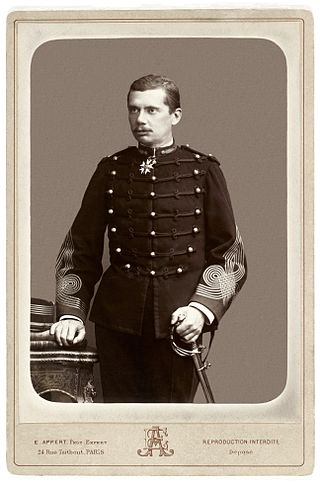
Gustave Borgnis-Desbordes was a French general. He was a major figure in the French Imperial conquest of the French Sudan, modern Mali. He was Commandant-Superior of the French Military Territory of Haut-Sénégal, attached to the colonial government of Senegal, 1880 to 1883.

Louis Edgard de Trentinian was a French soldier during the colonial era before World War I. He fought in French Indochina, and later was governor of the French Sudan. He commanded troops in the early part of World War I.

Jean-Baptiste Ernest Noirot was a French comic actor, photographer, explorer and colonial administrator in Senegal and French Guinea in West Africa. He became involved in scandal and was suspended in 1905 when two of his protégés were accused of extortion and other abuses of power, but later he was reinstated.

Albert Félix Dubois was a French journalist, explorer and entrepreneur who is best known for his books about his travels in French West Africa.
Antoine-Marie-Auguste Frézouls was a French colonial administrator who was Lieutenant Governor of French Guinea from September 1904 to March 1906.
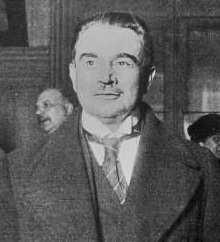
Jules Gaston Henri Carde was a French colonial administrator who served as Governor General of French West Africa and then Governor General of Algeria.
Paul Marty (1882-1938) was a French military officer, colonial administrator, interpreter and writer on Islam.

Aimé Olivier de Sanderval, comte de Sanderval, was a French adventurer, explorer of West Africa, entrepreneur and author.
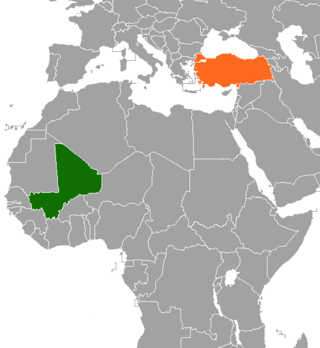
Mali–Turkey relations are the foreign relations between Mali and Turkey. Turkey has an embassy in Mali since February 1, 2010 and Mali opened an embassy in Ankara on June 27, 2014.

















